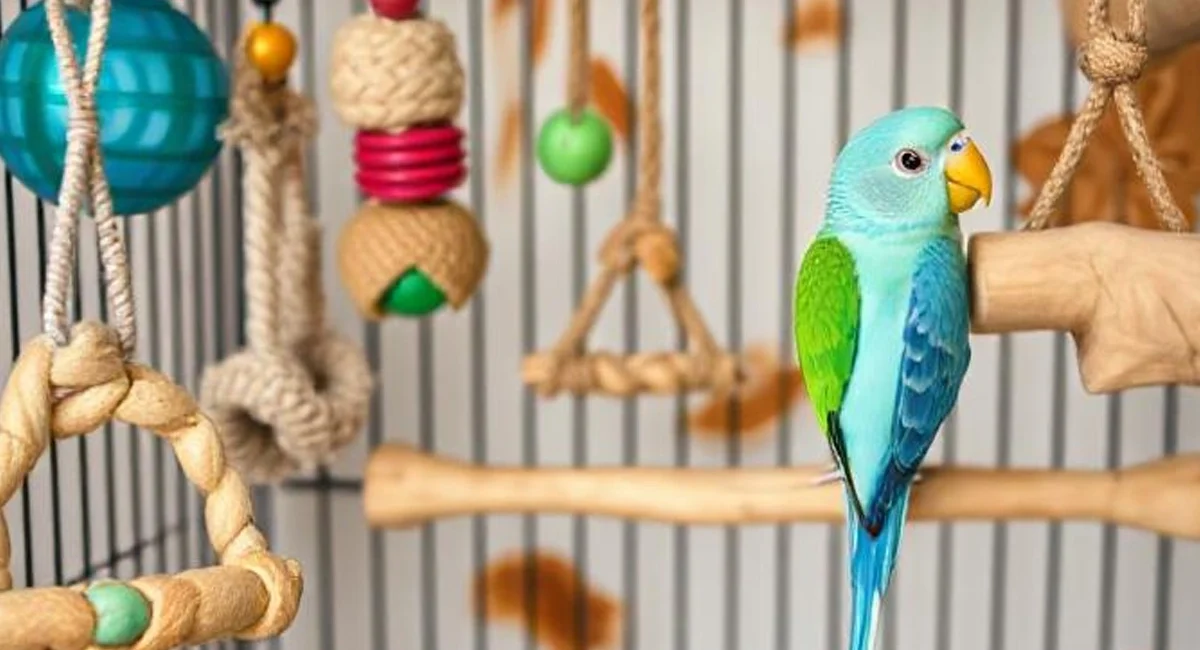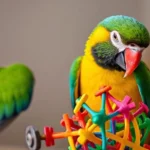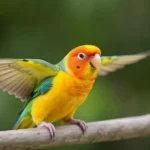Bird Cage Setup
Setting up the perfect bird cage is crucial for your pet’s well-being. A well-designed bird cage setup provides safety, comfort, and mental stimulation, ensuring your feathered friend thrives in their environment. Whether you’re a new bird owner or looking to upgrade your current setup, this guide will walk you through the essentials of creating an ideal habitat for your bird.
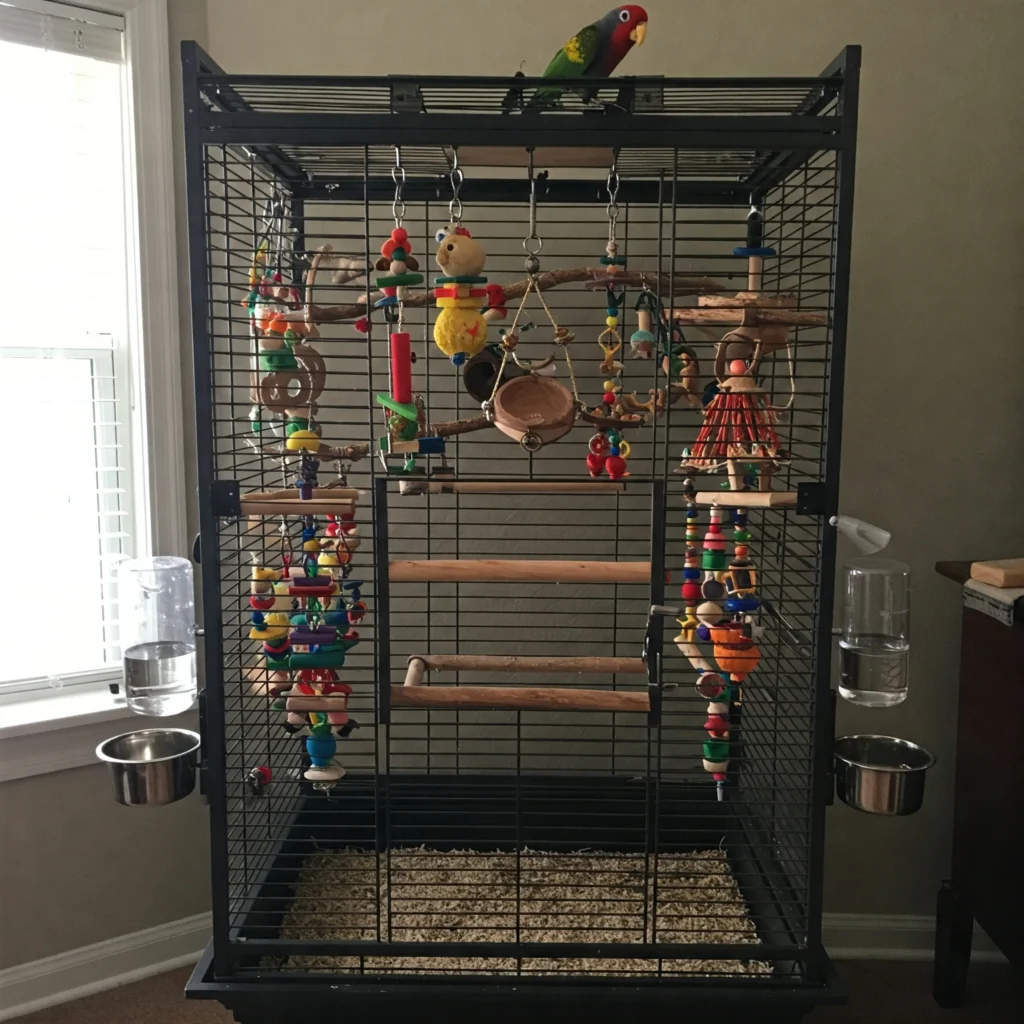
Give Your Feathered Friend a Stylish Getaway!
The MidWest Homes for Pets Avian Adventures Poquito Avian Hotel in Ruby is the perfect temporary home for your bird. Ideal for travel, short-term boarding, or even a sunny outdoor visit, this sturdy and safe cage offers easy, no-tool assembly and a bird-proof lock for peace of mind. Includes perches and food bowls.
Choosing the Right Cage
Size and Shape Matter
When selecting a cage, size is paramount. Your bird should have ample space to stretch its wings, climb, and play. As a general rule, the cage should be at least twice the wingspan of your bird in width, depth, and height . For multiple birds, opt for an even larger cage to prevent overcrowding
Small birds (e.g., budgies): Minimum 18″x18″x18″
Medium birds (e.g., cockatiels): Minimum 24″x24″x24″
Large birds (e.g., macaws): Minimum 36″x36″x48″
Pro Tip: Opt for wider cages over taller ones, as birds fly horizontally.
Bar Spacing and Material
Ensure the bar spacing is appropriate for your bird’s size to prevent escape or injury. Small birds like finches and budgies require bar spacing no more than ½ inch, while larger parrots can have up to 1-inch spacing . Opt for cages made of stainless steel or powder-coated metal, as they are durable and safe.
Small birds: 1/2″ spacing
Medium birds: 5/8″ to 3/4″ spacing
Large birds: 3/4″ to 1″ spacing
Pro Tip: Choose cages made of stainless steel or powder-coated metal to avoid toxicity.
Optimal Cage Placement
Place the cage in a well-lit area away from drafts, direct sunlight, and kitchen fumes. Birds are social creatures and enjoy being part of the household activity, so positioning the cage in a living room or family area is ideal . However, ensure they have a quiet space to retreat to when needed.
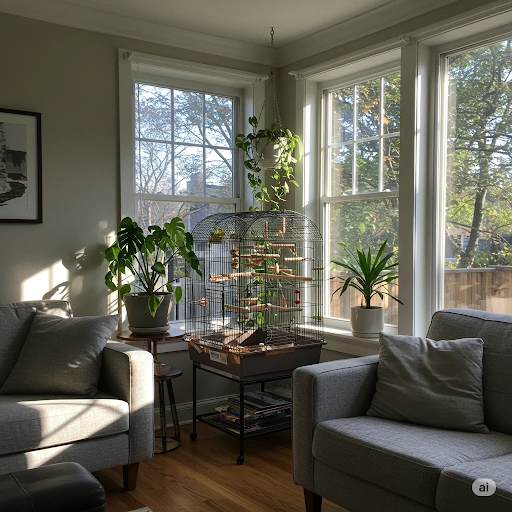
Give Your Birds Room to Flourish!
The VEVOR 30-inch Flight Bird Cage provides ample space for small to medium-sized birds like parakeets, canaries, cockatiels, lovebirds, finches, budgies, and conures. This versatile cage is stackable and can be divided, offering flexible living arrangements. Features a convenient handle for travel and includes perches for your feathered friends.
Furnishing the Cage
Perches
Provide a variety of perches with different diameters and textures to promote foot health. Natural wood perches are excellent choices, as they mimic branches found in the wild. Avoid sandpaper-covered perches, which can cause foot abrasions.
Food and Water Dishes
Use sturdy, easy-to-clean dishes for food and water. Place them away from perches to prevent contamination. Some birds enjoy bathing, so consider adding a shallow birdbath or misting them gently with water.
Toys and Enrichment
Toys are vital for mental stimulation. Include a mix of chewable toys, bells, and foraging toys to keep your bird engaged. Rotate toys regularly to maintain interest. Ensure all toys are bird-safe and appropriately sized
4. Flight & Exercise
Safe out-of-cage time
Climbing ladders & ropes
Obstacle courses
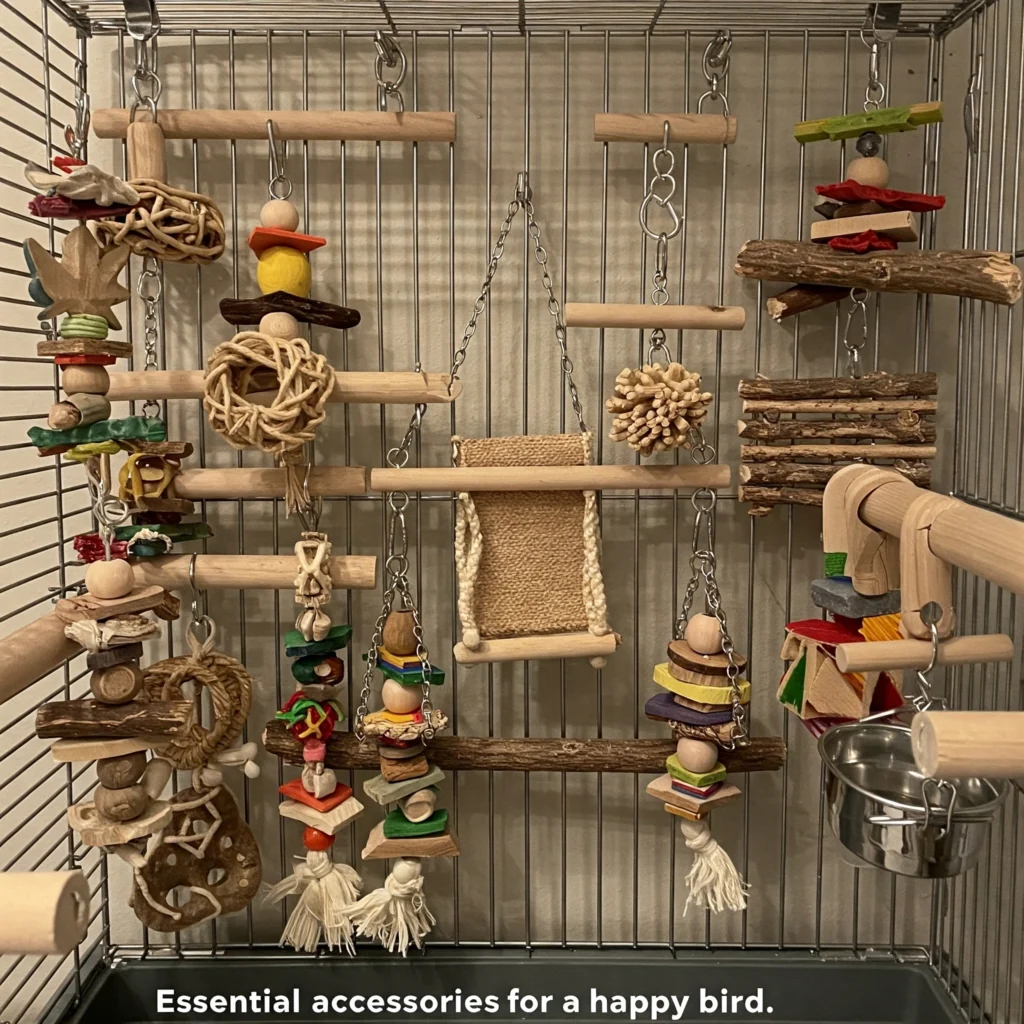
Give Your Larger Birds Freedom and Fun!
The VEVOR 41-inch Open Top Large Parrot Bird Cage is perfect for providing spacious and stimulating environment for larger birds like small conures, as well as smaller birds like parakeets, finches, canaries, lovebirds, cockatiels, and budgies. Its open-top design allows for supervised out-of-cage time, and it can also be hung. This versatile cage includes a swing and perch for added enjoyment and is suitable fo
Maintenance and Hygiene
Regular cleaning is essential to prevent disease and ensure your bird’s health. Clean food and water dishes daily, replace cage liners, and disinfect the cage weekly. Remove uneaten food and soiled toys promptly.
Daily: Change liners, clean food and water dishes.
Weekly: Clean perches and toys.
Monthly: Deep clean the entire cage with bird-safe disinfectants.
Frequently Asked Questions (FAQs)
How often should I clean the bird cage?
Daily spot cleaning and weekly deep cleaning are recommended to maintain hygiene.
Can I place the bird cage in the kitchen?
No, kitchens can have harmful fumes and temperature fluctuations that are unsafe for birds.
What materials are safe for bird toys?
Toys made from untreated wood, stainless steel, and bird-safe plastics are ideal.
How many perches should be in the cage?
Provide at least 2-3 perches of varying sizes and textures to promote foot health.
Is it necessary to cover the cage at night?
Covering the cage can help your bird sleep better by reducing light and noise disturbances.
Final Thoughts & Next Steps
Creating the perfect bird cage setup isn’t just about aesthetics—it’s about ensuring your avian companion thrives in a safe, stimulating, and comfortable environment. By thoughtfully selecting the right cage, positioning it optimally, and enriching it with suitable accessories, you’re laying the foundation for your bird’s happiness and well-being.
Remember, a well-designed bird cage setup can significantly enhance your pet’s quality of life, offering them both security and stimulation. It’s a reflection of your commitment and love.
🛒 Ready to Elevate Your Bird's Living Space?
Explore our curated selection of top-rated bird cage essentials to transform your pet’s habitat:
Bird Cage Essentials Kit: A comprehensive set to kickstart your setup.
Stainless Steel Bird Cage: Durable and easy to clean.
Natural Wood Perches: Promote foot health and comfort.
Variety Pack of Bird Toys: Keep your bird entertained and engaged.
Bird-Safe Cleaning Supplies: Ensure a hygienic environment.
Don’t wait—check it out here and give your feathered friend the home they deserve!

